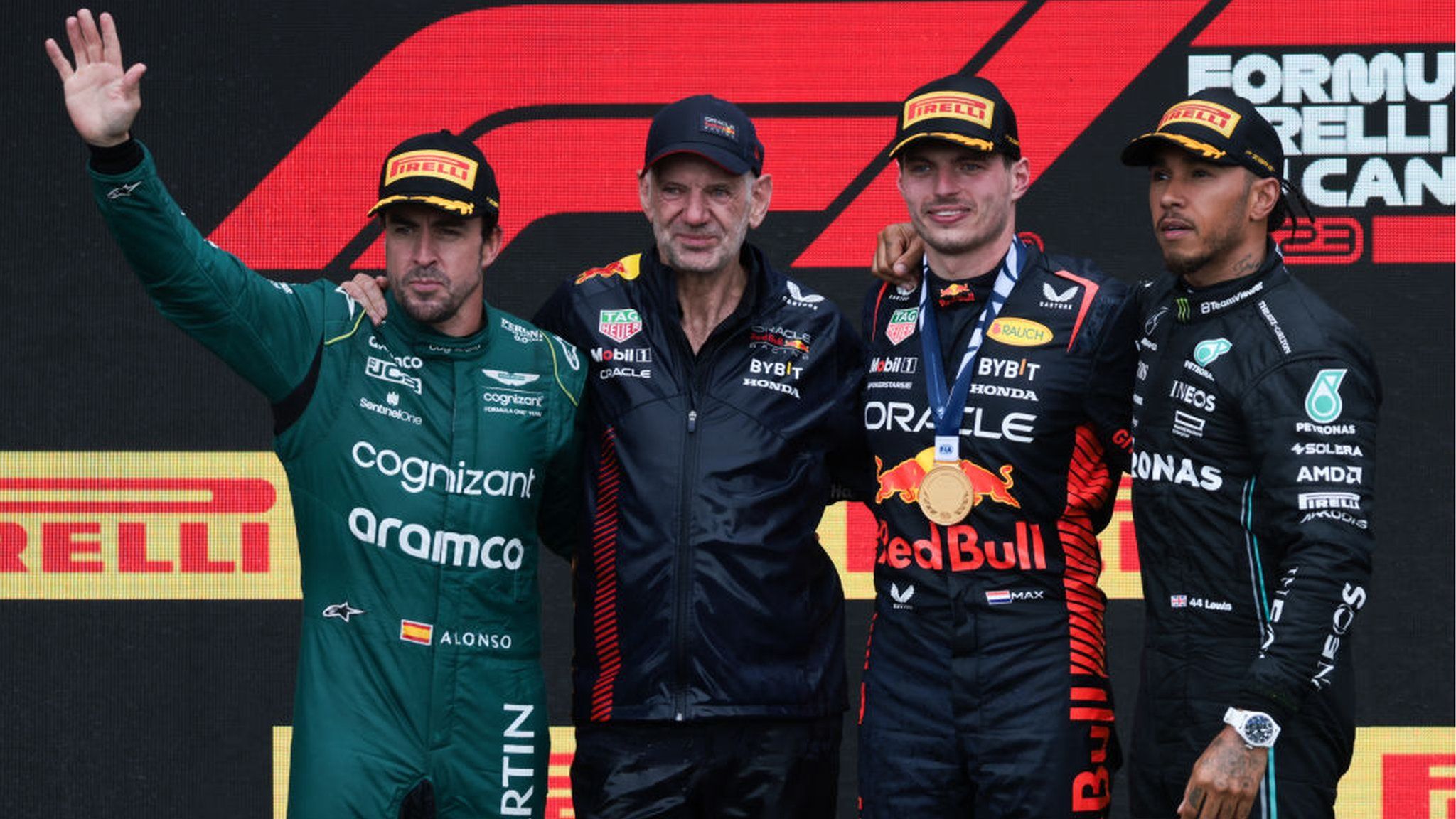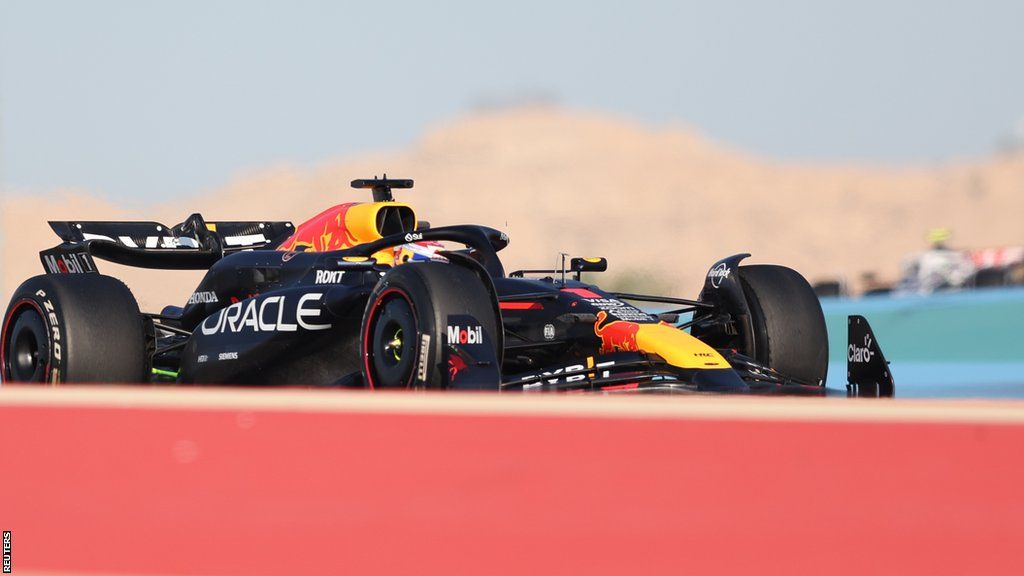
Max Verstappen, Lewis Hamilton and Fernando Alonso are Formula 1’s three biggest characters, and the 2024 season which starts in Bahrain this weekend looks set to be defined by them, on and off track.
Verstappen starts the season as a hot favourite for a fourth consecutive world title, and the likelihood of another year of dominance from the Dutchman and his Red Bull team will raise questions about the health of the sport.
Hamilton has shaken up the entire business with his close-season decision to switch to Ferrari for 2025, where he will form part of a supercharged driver line-up with Charles Leclerc.
There is a whole season to go before the most successful driver in history moves to the sport’s most celebrated team, but the dynamics set in play by the move will reverberate long and deep.
Hamilton’s move will directly impact on Alonso, who starts the season just under five months shy of his 43rd birthday, but cannot help but be at the centre of one of the most interesting driver markets in recent memory, with the contracts of most of the grid up for renewal.
Even if the action at the front of the field could trend towards the predictable, there will be plenty to keep up the interest.
Dark cloud over Red Bull
This video can not be played
To play this video you need to enable JavaScript in your browser.
For all the expectation that Red Bull will pick up where they left off at the end of last season, there is a dark cloud hanging over the team – in the form of allegations made against team principal Christian Horner.
The 50-year-old is under investigation by his employers after claims of inappropriate behaviour towards a female colleague, which he “completely denies”.
The inquiry is ongoing, and Red Bull have given no information as to when it may be concluded.
Everyone in F1 has heard the detail of the allegations (which cannot be made public) and there is widespread concern among senior figures in F1 as to the damage this episode is doing to the sport’s image.
Hence Mercedes F1 boss Toto Wolff’s remarks during testing, when he said the investigation was “an issue for all of F.1”.
His opposite number at McLaren, Zak Brown, is the only other big player to put his head above the parapet on this issue. The American described the situation as “extremely serious” and, like Wolff, called for Red Bull to be transparent about its investigation and findings.
Until it is concluded, the situation puts everyone in F1, both inside and outside Red Bull, in an invidious position.
And it cannot help but be a distraction for Red Bull. How the team handles this situation will be a defining narrative of the season, whatever conclusions are reached about Horner.
Hamilton and the driver market

The Horner saga broke just days after the other massive story of the close season, Hamilton’s switch to Ferrari for 2025.
The move caught almost everyone by surprise – even Mercedes. Hamilton told Wolff about his decision over breakfast just a day before it emerged in the media.
It was all the more unexpected for the fact that Hamilton had signed a new contract with Mercedes only last summer, which was announced at the time as a two-year deal.
It turns out that negotiations had not been happy, that Hamilton had an exit clause after one season, and it seems he was less than impressed by what he perceived to be Mercedes’ lack of commitment to him when he had been seeking a longer contract.
Add in the fact that relations had already been strained when the team ignored his pleas to abandon their controversial – and now discredited – design philosophy during a difficult 2022 season, and Hamilton was receptive when Ferrari came calling.
“An opportunity came up at the end of the year and I decided to take it,” he said during testing last week, adding that “it really wouldn’t have happened” without Ferrari team principal Frederic Vasseur.
That remark must have hurt Wolff, who has worked with Hamilton for a decade and is one of Vasseur’s closest friends.
For all that Hamilton and Mercedes are professionals, and will want to perform as strongly as possible, inevitably this will lead to an awkward atmosphere at times.
It also means that there is now a seat at Mercedes open for 2024. Sergio Perez is also out of contract at Red Bull, who have told the Mexican he must improve over his lacklustre 2023 showings or risk being dropped.
And guess whose contract also runs out this season? Alonso. Ferrari’s Carlos Sainz is also looking for a drive after losing his seat to Hamilton.
A few years ago, Mercedes would have laughed out of town the idea of Alonso driving for them, because of their shared history.
Mercedes was McLaren’s works engine partner and co-owner when Alonso fell out with the team during the spy-gate saga of 2007, which led to them footing 40% of the $100m fine levied on the team by governing body the FIA.
But out of the current F1 drivers available, the two-time world champion is undoubtedly the strongest candidate, and the noises from Mercedes about Alonso have softened considerably in the wake of Hamilton’s decision. He is definitely under consideration.
Mercedes, though, are also pondering taking a chance on the rising star Andrea Kimi Antonelli, a 17-year-old Italian who has been on their driver development programme for some years.
Antonelli is starting his first season in Formula 2 this season, having skipped Formula 3, and he has been earning rave reviews.
Word in motorsport circles is that this winter he conducted a test in an F3 car at a wet Silverstone alongside two other highly rated F2/F3 drivers. Antonelli had never seen the circuit before, but was four seconds a lap faster than the others. Yes, you read that right – four seconds.
It’s no surprise, then, that Antonelli is being talked about as the next Verstappen.
But the question is, would Mercedes take the risk of putting him straight into their car after just one season of F2? If not, Alonso might make a very appealing stop-gap, although whether the Spanish veteran would seem himself in that light is another matter.
For his part, Alonso has emphasised his credentials. “I am probably attractive to other teams,” he said this month, “the performance they saw last year, the commitment. There are three world champions on the grid and I am the only one available.”
But he has also said that he first needs to decide whether he wants to “commit my life a few more years to the sport which I love” or “maybe have more time for my private life, which is also very important at this age”.
The rules and the FIA

Politically, there will also be plenty going on this year. It was a difficult winter for governing body the FIA.
Three senior executives departed, including the sporting director Steve Nielsen after less than a year in his role. Nielsen had been charged with sorting out the FIA’s race operations, but he lost confidence in the organisation’s willingness to change, so walked.
Single-seater technical director Tim Goss also left his role to join Red Bull’s RB team, although he has recently been replaced by Jan Monchaux, formerly of Sauber.
And the FIA found itself embroiled in a bizarre saga with Toto and Susie Wolff, which may well yet have ramifications.
Meanwhile, the FIA has yet to finalise the 2026 rules, which are proving troublesome. The engine regulations were finished some time ago. They have tweaks – including increasing the proportion of power provided by the electrical element of the hybrid engines to around 50%. These proved sufficient to attract Audi into F1.
But the new engines, while more road-relevant, will be less efficient than the current ones. To compensate, the rule makers need to reduce the drag of the cars. To do so, they are introducing moveable aerodynamics – formerly banned in F1 for many years.
The rules are due to be finalised by the end of June this year but they are complex and the FIA is short of staff, so it asked the teams for a later deadline, in October. But this needed unanimity and that was not forthcoming. Will they be finished in time?
Beyond that, the basis of the new chassis rules is the same as the current ones in that ground-effect cars with venturi floors will continue.
These rules, introduced in 2022, were supposed to make F1 more competitive. The field has closed up but they have led to two seasons of almost total domination by one team.
In that context, it seems inevitable that not only will people in F1 begin to question whether these rules – constructed under the oversight of Ross Brawn, who has now left F1 – have been a failure. But also, if so, whether it is right to use them as the foundation for a whole new ruleset.
Hardly the ideal time, then, for there to be continuing tensions between the FIA and commercial rights holder F1, which most recently were clear in the proposed entry of the US-based Andretti team.
FIA president Mohammed Ben Sulayem – who has been a controversial figure since he was elected in December 2021 – championed Andretti and put their bid forward to F1 for approval.
But in January, F1 said no – at least until Andretti’s engine partner General Motors produces its own engine, which the US giant has said it will by 2028.
This saga has been overtaken in the news cycle by the Hamilton and Horner stories, but it would be a surprise if it did not revive.
Likewise, there is concern in some quarters over the relationship between Red Bull and RB, which is growing closer. Brown has called for the rules on what constitutes a customer team to be reconsidered, to reinforce that philosophy that each team should be an independent constructor.
All this, and the longest season there has ever been at 24 races. About the ever-expanding calendar, created by the desire to make more money, there has long been concern.
An F1 season is already a marathon for all involved; it’s becoming more like an ultra-marathon. There are real concerns that the sport would be in danger of over-saturation even if there was genuine competitive jeopardy, which many feel there will not be.
As Ferrari driver Carlos Sainz put it last week: “I hope it is closer at the front. Otherwise, I fear a 24-race calendar could be a bit too much.”
